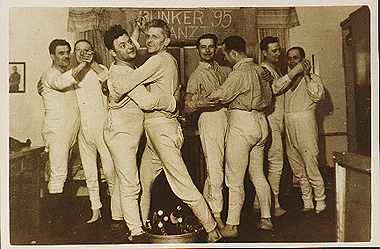| ,Eva Brunner-Szabo / Gert Tschoegl | Museum
of Rememberance |
|
| The language of photograph is universal, the remembrances of spectators are individual. | ”Millions of photographs can be found in drawers, garrets and shoe-boxes.
A photographic universe of the private histories and biographies. It seems
to be an act of a collective enterprise - a complete work and total ethnographic
inquiry.
These photographs are the basic material for the project ”Museum of Remembrances”. With the enormous number of pictures , photographs lose ttheir remembrances. The narratives to the pictures, passed from generation to generation, are sinking into oblivion. Innumerable pictures lose their captions. This project deals with the remembrances of the spectators. The spectators’ memories can be a source for historians to determine the anonymous photographs. Collecting narratives in context with the pictures the silent world of anonymous photographs gets back the history narrated by the collective. Remembrances get visible - pictures get their history.
The act of watching photographs implies moments, which trigger the spectator’s capability to remember the past. The project ”Museum of Remembrances” publishes anonymous photographs and tries to get access to the individual memories of the spectator by that way. The scientific approach of this project can be seen as an experiment to get memories (in the sense of oral history), triggered by photographs. From the artistic point of view the project can be seen as Spurensicherung (securing traces), an artistic trend of the seventies. The artist intends to systematize the memories, like science or museums. It is like an archeological act to excavate fragments and to reconstruct historical facts. But the artist doesn’t have interest in objectivity and historical ezxactness, although he/she excavates, collects, registers and classifies – because the ”feigned scientific approach is the nature of the Spurensicherung. The artists objective is to urge on the memories and to compare different personal memories. The formal criterion for the selection of objects and photographs, or the presentation depends on the subjective approach of the artist.
|
|
